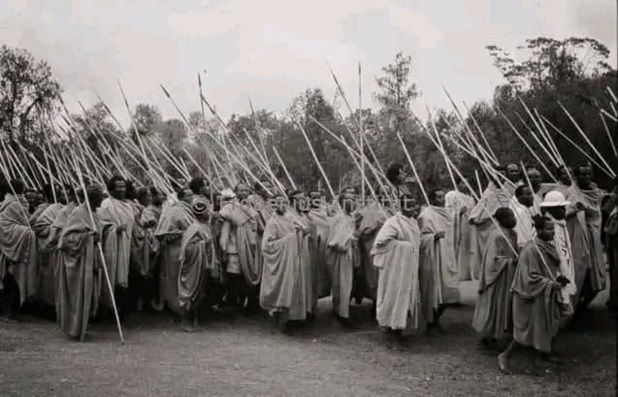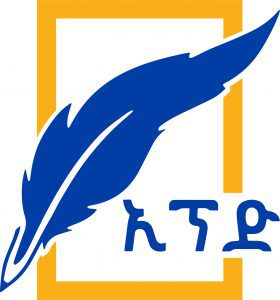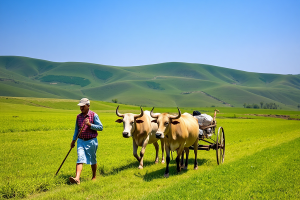
The Luwa system in the Sidama region serves as a traditional institution for resolving social, political, spiritual, and economic issues. This cultural framework relies on leaders known as Gadana, who are expected to embody moral integrity and bear significant spiritual responsibilities. The Luwa system also plays a crucial role in cultivating individuals with strong ethical values.
As one of the oldest cultural institutions among the Sidama people, the Luwa system organizes male members of the tribe according to their lineage, facilitating various social, economic, and religious activities. It fosters a supportive network among men, enabling them to forge lifelong friendships while working together to safeguard their community and fulfill their collective responsibilities.
The Luwa institution emerged when the Sidama community sought to establish an environment conducive to their well-being. It was designed to promote mutual support, strengthen unity, foster respect, and instill social discipline.
According to the elders, the Sidama community views the Luwa as a legitimate and traditional institution reflective of their way of life, known as Sewa Chefa, a concept passed down through generations.
In Sidama culture, every male member is expected to navigate three significant life stages: participation in the Luwa, undergoing circumcision, and attaining elder status, referred to as meessa. Within the Luwa, fathers of the Sidama nation are distinguished from other tribe members and referred to as Berawi through a generational cycle. This institution plays a vital role in enhancing their social standing within the community.
Individuals who fail to meet the responsibilities associated with the Luwa face social scorn and limited participation in accepted norms. The Luwa operates under its own organizational and cultural framework, involving various institutions and individuals—such as Garo, Mote, Chimeye, Masalano, and Ianto—each fulfilling distinct roles.
Elders assert that equality among Luwa participants is determined not by age but by birth order, with children entering the Luwa cycle of their fathers. Historical evidence suggests that a system of age-sets linked to traditional institutions emerged in the Rift Valley region of Ethiopia around 2000 years before Christ. Prehistorian Ehert notes that this cycling age-set system became established in the Ethiopian Rift no later than the 2nd millennium BC, involving groupings of adolescent boys who underwent a common rite of passage.
However, unlike the aforementioned age group system, the Sidama Luwa institution encompasses individuals from various age groups, as membership is based on birth order rather than age. This characteristic reinforces the idea, as expressed by the elders, that Luwa is one of the ancient cultural cornerstones of the Sidama nation.
Historical origins
The Luwa institution represents one of the oldest embodiments of Sidama identity and served as a traditional governance system before the community settled in their current location. Various narratives from the elders recount the origins of Luwa. Some believe it was created by ancient cattle herders who constructed temporary shelters to alleviate loneliness, appointing one among them as their leader, Jalaw, who was subsequently named Murrichcha and provided sustenance for the group.
In the Red Sea region, particularly in Afar, Elders claim that the Luwa was governed by the principle of Halale during its early development in Dawa Dabt. The five Luwa groups trace their lineage back to Cha Dabcho of Dawa Dabcho, who is said to have fought against enemies seventeen generations ago. This initial Luwa, known as Gada Kunche Luwa, is believed to have marched to a place called Salfa. As noted by Braucamper, the Bushe people initiated the practice of Gada/Luwa during their time in Dawa, integrating this innovation into their culture upon reaching Sidama land.
The enduring relevance of the Luwa community is evident, having been utilized for centuries.
The importance of Luwa
The Luwa institution offers numerous social, administrative, and spiritual advantages. It encourages virtues such as strength, exemplarity, mediation, and the pursuit of peace. Other traditional institutions, like Ande Mote and Wema, play supportive roles in providing public services, while the Luwa members lead efforts to protect the community from external threats.
During a Luwa term, members and their leaders are tasked with maintaining peace, security, and unity. In Sidama culture, a person’s transition from youth to elder (cimeessa) can only occur after completing the Luwa and circumcision stages. This process, known as lolloqa irkisa, conveys that a woman associated with a Luwa member who marries another man may face dire consequences, reinforcing the significance of the Luwa’s social norms.
Traditional beliefs further enrich the Luwa’s cultural fabric. When the Luwa convenes every eight years, childless women are married to its members, under the belief that such unions will lead to childbirth. Gifts—such as cattle, rams, or clothing—are offered to the bridegroom, reflecting the community’s investment in these unions. Members of the Luwa are held in high esteem, as their blessings are believed to restore lost fortunes.
The Luwa institution’s absence would disrupt the circumcision system and deny individuals the social respect they deserve. It is thought that a respected elder’s failure to fulfill their role may result in a generation lacking in moral character.
Transitioning to the status of Chemesa (elder) is contingent upon completing the Luwa and circumcision stages. Elders are expected to lead by example, resolve conflicts, and act with integrity.
As society enters the digital age, a new system—Luwaa, a lightweight scripting language—is gaining prominence in fields such as game development, embedded systems, and education. While Luwa governs societal ethics, Luwaa directs machines through logic and code.
In today’s technology-driven landscape, programming skills are essential. Luwaa provides an accessible entry point for Sidama youth eager to develop digital competencies, teaching programming fundamentals and fostering logical thinking and innovation.
By integrating traditional values with modern tools, the Sidama community can empower future generations with both cultural wisdom and expertise. The Luwa system is not merely a relic; it is a dynamic institution that continues to shape the identity, morality, and governance of the Sidama people. As they embrace contemporary tools like Lua programming, there exists a unique opportunity to bridge ancient values with modern knowledge, fostering a resilient, ethically grounded, and forward-looking society.
BY LAKACHEW ATINAFU
THE ETHIOPIAN HERALD SATURDAY 17 MAY 2025


